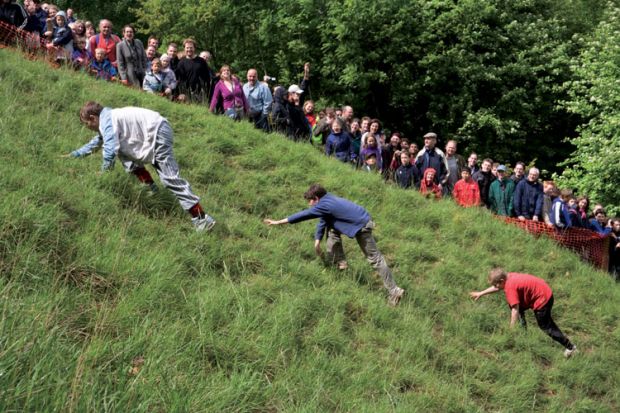Russell Group universities have been the primary beneficiaries of increased higher education funding in the UK and now account for almost half of total sector income, an analysis says.
The study, of more than 120 universities, calculates that their combined income rose by 54.4 per cent in real terms between 2001-02 and 2013-14: from £16.4 billion to £25.4 billion, based on 2008 prices. The vast majority of this growth came before the financial crash of that year, with a real-terms increase of only 4.2 per cent since then.
The paper, due to be presented at the Society for Research into Higher Education’s annual conference on 10 December, asks whether the 21st century has been a “golden age” for university funding, but acknowledges that this prosperity has not been shared equally.
Andrew Jenkins, a research fellow at the UCL Institute of Education, and Alison Wolf, Sir Roy Griffiths professor of public sector management at King’s College London, say that the income of Russell Group universities in their sample rose by 69.9 per cent in real terms between 2001-02 and 2013-14, from £7.3 billion to £12.5 billion.
Other universities experienced significantly less growth in real-terms income: pre-92 institutions outside the Russell Group notched up 42.4 per cent growth, from £4 billion to £5.7 billion, and ex-polytechnics’ income rose by 36.4 per cent, from £4 billion to £5.4 billion. Other new universities’ income increased from £1.1 billion to £1.8 billion, up 59.7 per cent.
As a result, the Russell Group’s share of total income has increased from 44.7 per cent to 49.1 per cent, according to the study, which is based on Higher Education Statistics Agency data.
Dr Jenkins, a visiting research fellow at King’s, said that the mission group’s highly selective, research-intensive institutions had clearly “pulled further away”.
However, the study also raises questions about whether academics have enjoyed the full benefit of increased income.
Staffing has clearly been an area of investment, it says, as student-staff ratios have held steady over time.
However, the largest expansion has been among administrative staff, whose numbers grew by 29 per cent across the UK between 2004-05 and 2011-12. The proportion of managers and professional administrators to academics stood at 33 per cent in 2011-12 in old, non-Russell Group universities, up from 28 per cent seven years earlier, and at about 28 per cent in other institutions, up from about 24 per cent. Meanwhile, the ratio of academic staff to full-time students has declined slightly across the board.
The researchers find that those academics who have been taken on have increasingly been employed on teaching-only contracts, with this category representing 14.8 per cent of the scholarly workforce in 2012-13, up from 9.8 per cent in 2004-05.
In numerical terms, the increase over the same period was even larger: from 11,797 to 21,031, up 78.3 per cent. By far the biggest jump was in the Russell Group, which employed 7,496 academics on these terms in 2012-13, up 176.4 per cent in eight years.
In contrast, the number of staff on teaching and research contracts across the sector as a whole rose by only 8.2 per cent over the same period, to 80,819, while there was a 19.2 per cent increase in research-only staff, to 38,732.
POSTSCRIPT:
Print headline: Russell Group has pulled ‘further away’ in funding race since 2001
Register to continue
Why register?
- Registration is free and only takes a moment
- Once registered, you can read 3 articles a month
- Sign up for our newsletter
Subscribe
Or subscribe for unlimited access to:
- Unlimited access to news, views, insights & reviews
- Digital editions
- Digital access to THE’s university and college rankings analysis
Already registered or a current subscriber? Login




